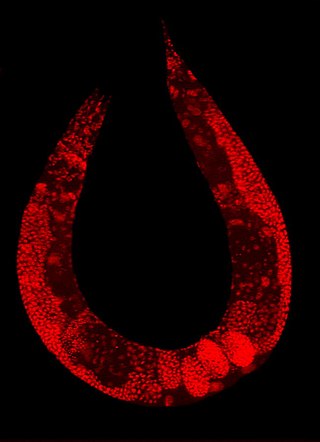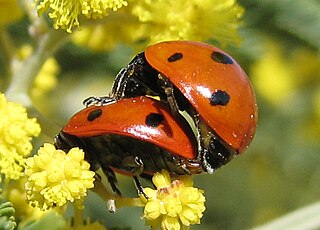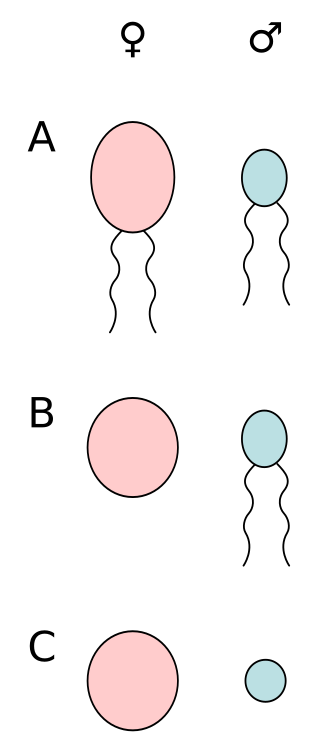
Asexual reproduction is a type of reproduction that does not involve the fusion of gametes or change in the number of chromosomes. The offspring that arise by asexual reproduction from either unicellular or multicellular organisms inherit the full set of genes of their single parent and thus the newly created individual is genetically and physically similar to the parent or an exact clone of the parent. Asexual reproduction is the primary form of reproduction for single-celled organisms such as archaea and bacteria. Many eukaryotic organisms including plants, animals, and fungi can also reproduce asexually. In vertebrates, the most common form of asexual reproduction is parthenogenesis, which is typically used as an alternative to sexual reproduction in times when reproductive opportunities are limited. Komodo dragons and some monitor lizards can reproduce asexually.

A gamete is a haploid cell that fuses with another haploid cell during fertilization in organisms that reproduce sexually. Gametes are an organism's reproductive cells, also referred to as sex cells. The name gamete was introduced by the German cytologist Eduard Strasburger.

Reproduction is the biological process by which new individual organisms – "offspring" – are produced from their "parent" or parents. There are two forms of reproduction: asexual and sexual.

Sex is the trait that determines whether a sexually reproducing organism produces male or female gametes. During sexual reproduction, a male and a female gamete fuse to form a zygote, which develops into an offspring that inherits traits from each parent. By convention, organisms that produce smaller, more mobile gametes are called male, while organisms that produce produce larger, non-mobile gametes are called female. An organism that produces both types of gamete is hermaphrodite.

Alternation of generations is the predominant type of life cycle in plants and algae. In plants both phases are multicellular: the haploid sexual phase – the gametophyte – alternates with a diploid asexual phase – the sporophyte.

A multicellular organism is an organism that consists of more than one cell, in contrast to unicellular organism. All species of animals, land plants and most fungi are multicellular, as are many algae, whereas a few organisms are partially uni- and partially multicellular, like slime molds and social amoebae such as the genus Dictyostelium.

In biology, a biological life cycle is a series of stages of the life of an organism, that begins as a zygote, often in an egg, and concludes as an adult that reproduces, producing an offspring in the form of a new zygote which then itself goes through the same series of stages, the process repeating in a cyclic fashion.

The green algae are a group of chlorophyll-containing autotrophic eukaryotes consisting of the phylum Prasinodermophyta and its unnamed sister group that contains the Chlorophyta and Charophyta/Streptophyta. The land plants (Embryophytes) have emerged deep in the Charophyte alga as a sister of the Zygnematophyceae. Since the realization that the Embryophytes emerged within the green algae, some authors are starting to include them. The completed clade that includes both green algae and embryophytes is monophyletic and is referred to as the clade Viridiplantae and as the kingdom Plantae. The green algae include unicellular and colonial flagellates, most with two flagella per cell, as well as various colonial, coccoid and filamentous forms, and macroscopic, multicellular seaweeds. There are about 22,000 species of green algae, many of which live most of their lives as single cells, while other species form coenobia (colonies), long filaments, or highly differentiated macroscopic seaweeds.

Sexual reproduction is an adaptive feature which is common to almost all multicellular organisms and various unicellular organisms. Currently, the adaptive advantage of sexual reproduction is widely regarded as a major unsolved problem in biology. As discussed below, one prominent theory is that sex evolved as an efficient mechanism for producing variation, and this had the advantage of enabling organisms to adapt to changing environments. Another prominent theory, also discussed below, is that a primary advantage of outcrossing sex is the masking of the expression of deleterious mutations. Additional theories concerning the adaptive advantage of sex are also discussed below. Sex does, however, come with a cost. In reproducing asexually, no time nor energy needs to be expended in choosing a mate and, if the environment has not changed, then there may be little reason for variation, as the organism may already be well-adapted. However, very few environments have not changed over the millions of years that reproduction has existed. Hence it is easy to imagine that being able to adapt to changing environment imparts a benefit. Sex also halves the amount of offspring a given population is able to produce. Sex, however, has evolved as the most prolific means of species branching into the tree of life. Diversification into the phylogenetic tree happens much more rapidly via sexual reproduction than it does by way of asexual reproduction.

Anisogamy is a form of sexual reproduction that involves the union or fusion of two gametes that differ in size and/or form. The smaller gamete is male, a sperm cell, whereas the larger gamete is female, typically an egg cell. Anisogamy is predominant among multicellular organisms. In both plants and animals gamete size difference is the fundamental difference between females and males.

Male is the sex of an organism that produces the gamete known as sperm, which fuses with the larger female gamete, or ovum, in the process of fertilisation. A male organism cannot reproduce sexually without access to at least one ovum from a female, but some organisms can reproduce both sexually and asexually. Most male mammals, including male humans, have a Y chromosome, which codes for the production of larger amounts of testosterone to develop male reproductive organs.

Oogamy is a form of anisogamy where the gametes differ in both size and form. In oogamy the large female gamete is immotile, while the small male gamete is mobile. Oogamy is a common form of anisogamy, with almost all animals and land plants being oogamous.
Mating types are the microorganism equivalent to sexes in multicellular lifeforms and are thought to be the ancestor to distinct sexes. They also occur in macro-organisms such as fungi.

Udoteaceae is a family of green algae, in the order Bryopsidales.

An organism's sex is female if it produces the ovum, the type of gamete that fuses with the male gamete during sexual reproduction.

Sexual reproduction is a type of reproduction that involves a complex life cycle in which a gamete with a single set of chromosomes combines with another gamete to produce a zygote that develops into an organism composed of cells with two sets of chromosomes (diploid). This is typical in animals, though the number of chromosome sets and how that number changes in sexual reproduction varies, especially among plants, fungi, and other eukaryotes.

Volvox carteri is a species of colonial green algae in the order Volvocales. The V. carteri life cycle includes a sexual phase and an asexual phase. V. carteri forms small spherical colonies, or coenobia, of 2000–6000 Chlamydomonas-type somatic cells and 12–16 large, potentially immortal reproductive cells called gonidia. While vegetative, male and female colonies are indistinguishable; however, in the sexual phase, females produce 35-45 eggs and males produce up to 50 sperm packets with 64 or 128 sperm each.
Sexual selection has been observed in fungi as a part of their reproduction, although they also often reproduce asexually. In the basidiomycetes, the sex ratio is biased towards males, implying sexual selection there. Male–male competition to fertilize occurs in fungi including yeasts. Pheromone signaling is used by female gametes and by conidia, implying male choice in these cases. Female–female competition may also occur, indicated by the much faster evolution of female-biased genes in fungi.
Gametogamy is sexual fusion – copulation or fertlization – of two single-celled gametes of different sex and the union of their gamete nuclei giving the zygote nucleus, as well as whole zygotic content.
Germ-Soma Differentiation is the process by which organisms develop distinct germline and somatic cells. The development of cell differentiation has been one of the critical aspects of the evolution of multicellularity and sexual reproduction in organisms. Multicellularity has evolved upwards of 25 times, and due to this there is great possibility that multiple factors have shaped the differentiation of cells. There are three general types of cells: germ cells, somatic cells, and stem cells. Germ cells lead to the production of gametes, while somatic cells perform all other functions within the body. Within the broad category of somatic cells, there is further specialization as cells become specified to certain tissues and functions. In addition, stem cell are undifferentiated cells which can develop into a specialized cell and are the earliest type of cell in a cell lineage. Due to the differentiation in function, somatic cells are found ony in multicellular organisms, as in unicellular ones the purposes of somatic and germ cells are consolidated in one cell.















